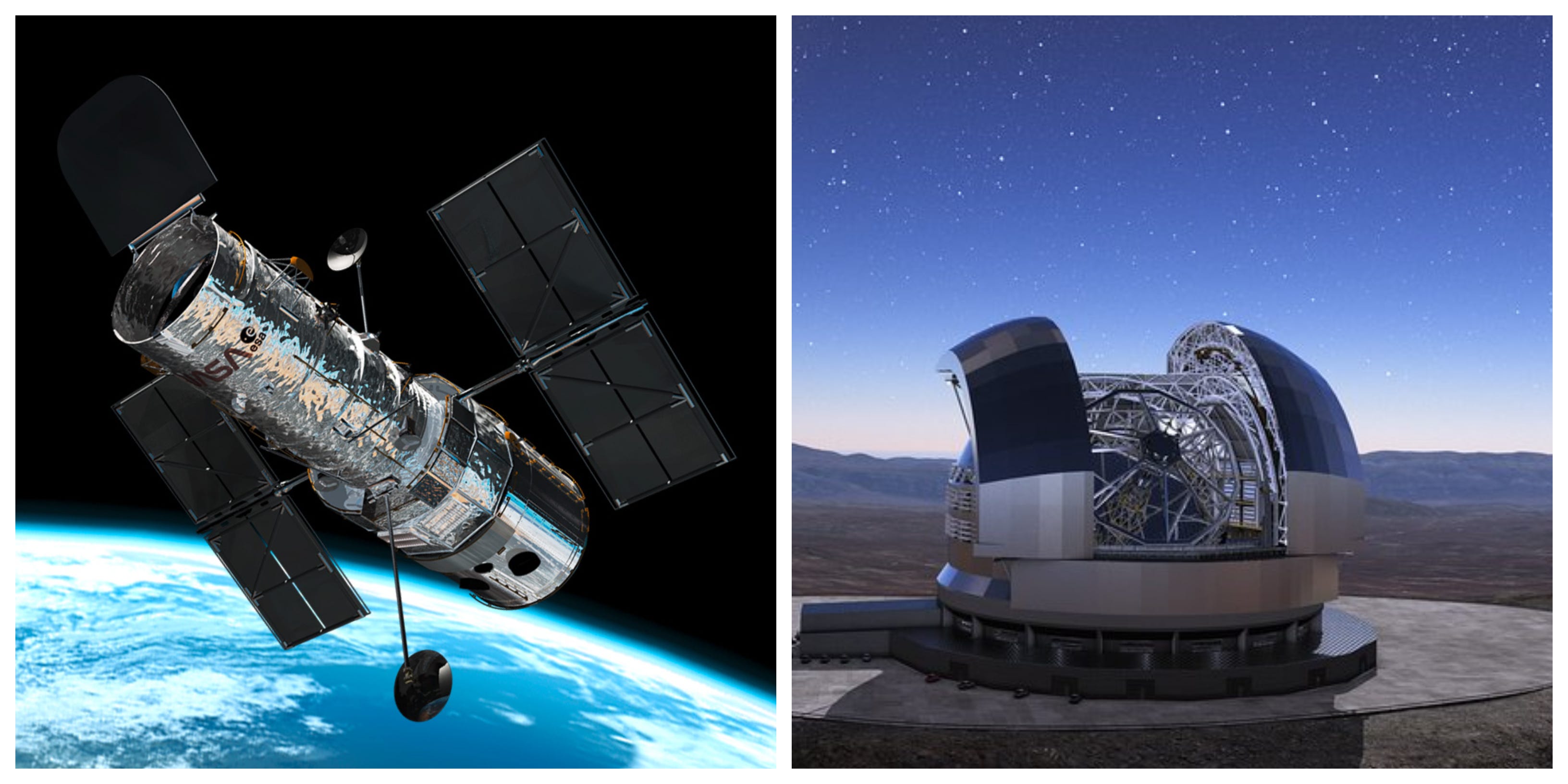A new study, based on observations of distant galaxy clusters seen by the Hubble Space Telescope and the Very Large Telescope in Chile reveal dark matter behaves differently than simulations predict, suggesting our models of dark matter may need to be refined. In 1933, astronomer Fritz Zwicky was observing the Coma galaxy cluster when he noticed something unusual — there was not anywhere near enough material to hold the group of galaxies together — yet, they are, somehow, gravitationally bound together. Zwicky suggested the presence of an unseen form of matter, which became known as dark matter. In the 1970’s, Vera Rubin used the 2.1 meter telescope at Kitt Peak outside Tucson, Arizona, studying the rates at which galaxies rotate. What she found showed dark matter resides within the structures galaxies as well as between them. Dark matter also makes up the large-scale infrastructure of the Universe — forming massive ribbons of galaxies that arc across the Cosmos. We now know that the ordinary matter out of which everything familiar is made — stars, planets, cats, and people — makes up just a small fraction of everything out there. One method of measuring dark matter is studying the way light from distant clusters of galaxies bends as it travels past a clump of dark matter. This effect, known as gravitational lensing, can magnify, or even make multiple images from, distant objects. Astronomers recently examined 11 distant galaxy clusters, using the Hubble Space Telescope and the Very Large Telescope (VLT) in Chile. These groups of galaxies are rich with dark matter both within the galaxies (small-scale clumps) and joining the clusters together (large-scale clumps). Razor-sharp images from Hubble, combined with advanced spectral analysis from the VLT provided astronomers with the tools they needed to probe these distant galactic clusters. These observations revealed dozens of background targets with their light paths bent by dark matter. By studying these targets, researchers were able to map out the amount and placement of pockets of invisible dark matter. Examination of this data revealed gravitational lensing from small-scale dark matter clumps is 10 times greater than expected. “To me personally, detecting a gnawing gap — a factor of 10 discrepancy in this case — between an observation and theoretical prediction is very exciting… It’s these kinds of gaps and anomalies that have often revealed that either we were missing something in the current theory, or it points the way to a brand-new model,” said Priyamvada Natarajan, astrophysicist at Yale University. Researchers also found images of different sizes nestled inside one another like Russian Matryoshka dolls. This new study could show a gap in astronomers’ understanding of dark matter. “The observed cluster substructures are more efficient lenses than predicted by CDM simulations, by more than [10 times]. We suggest that systematic issues with simulations or incorrect assumptions about the properties of dark matter could explain our results,” researchers describe in an article published in the journal Science. Spectroscopic analysis from VLT data allowed astronomers to measure velocities of individual stars within the galaxy clusters. This allowed them to determine the amount of mass, including dark matter, in the distant galactic clusters. “We have done a lot of careful testing in comparing the simulations and data in this study, and our finding of the mismatch persists. One possible origin for this discrepancy is that we may be missing some key physics in the simulations,” said Massimo Meneghetti of the INAF (National Institute for Astrophysics)-Observatory of Astrophysics and Space Science of Bologna in Italy. By bringing together different types of telescopes, examining targets over a range of frequencies (light, radio, infrared, ultraviolet, etc.), astronomers are better able to piece together processes occurring in and around distant targets. The supernova explosion of a distant star, for instance, will radiate in high frequencies — gamma rays and X-rays, before cooling off, radiating in visible light, infrared, and radio waves. By combining observations over all these frequencies, it is possible to develop a comprehensive record of an event. The Nancy Grace Roman Space Telescope, scheduled for launch in the mid-2020’s, will examine even more distant galaxy clusters, attempting to unravel the mysteries of dark matter. This article was originally published on The Cosmic Companion by James Maynard, founder and publisher of The Cosmic Companion. He is a New England native turned desert rat in Tucson, where he lives with his lovely wife, Nicole, and Max the Cat. You can read this original piece here. Astronomy News with The Cosmic Companion is also available as a weekly podcast, carried on all major podcast providers. Tune in every Tuesday for updates on the latest astronomy news, and interviews with astronomers and other researchers working to uncover the nature of the Universe.


